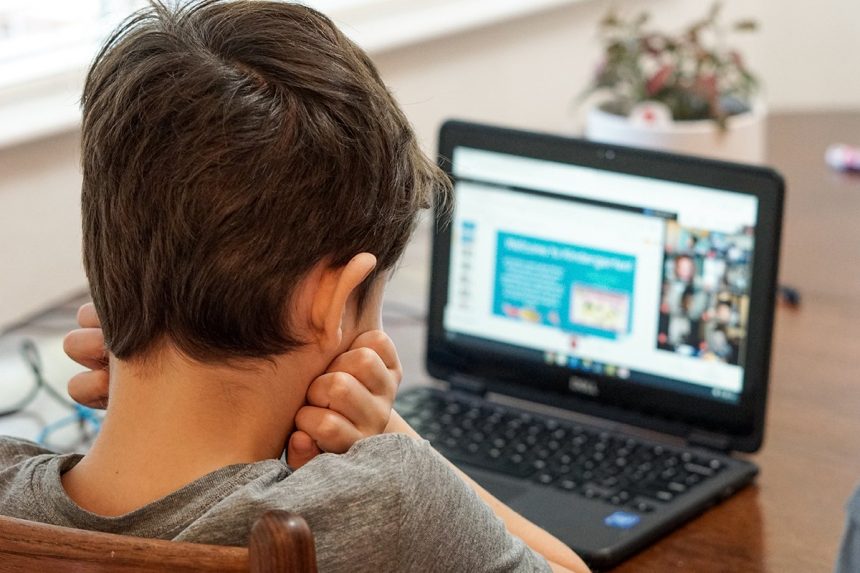All you need to know about homeschool
+ the 90-Minute School Day:
Parents around the country and around the world are all struggling with educational choices this fall as they consider what is best for their children and their family dynamic. Most public school districts in the United States are offering options: return to the classroom, hybrid option for in-class with virtual learning, and 100% virtual. One thing we all know, back-to-school in 2020 looks very different than in years past.
If you are considering the option of withdrawing your child from the public school district and taking the leap into homeschooling, this post is here to encourage you, inform you, and clear up some common misconceptions around homeschooling.
Is it too late to decide to homeschool?
It is never too late to decide to homeschool. Each state’s requirements are different, so be sure to do your due diligence in understanding the process to withdraw your student from their school district and re-enroll them in your homeschool through the district. The 90-Minute School Day was written with this expectation in mind. Whether you join in September, November or March, you will begin with Circuit 1. The first circuits are designed to help you and your student(s) transition to learning at home.
What about standardized testing and other state requirements?
Most states require standardized testing or a portfolio review by a state certified teacher. Some states only require this for certain grades. To be sure what your state’s requirements are, click here.
Am I enough? I’m not a teacher.
You are enough. More than enough. You were your child’s first teacher. Children all learn naturally, and when given space to explore curiosities, ask questions, and have new experiences, they build a path of learning not only for childhood but for a lifetime. All parents are educators. Your child learned their first foreign language from you. They entered this world speechless. and within three years, commanded the language you speak to them, fluently. There are high school and college foreign language teachers that struggle to produce students with fluency rates comparable to yours. Your child has learned how to move their body in time and space and can mimic most of what you can do with your body by 1st grade. They know right from wrong, they can sing, dance, recite, argue, and reason. They are natural learners and we are natural teachers. It is a symbiotic relationship as old as time.
I work full time, is this possible?
Yes. One of the main reasons we developed 90-Minute School Day was to help working parents. The circuits are designed in easy time blocks for you to sprinkle throughout your day as your schedule allows. We want to maximize flexibility for your work time and your children’s school time. Instead of supervising your child’s Zoom schedule and managing your own workload, you now have the agency and control to block the times that work for you and your family to teach the children. The first three weeks specifically are designed to help with the transition by developing a new schedule for both of these realities to co-exist.
Isn’t online learning enough for now?
Technology cannot replace human-to-human connection. Online learning simply is no match for learning with a live person in real life, especially for the young preschool and elementary child, who are generally more kinesthetic learners. Person-to-person learning and reading together is interactive and responsive. Because the home environment is full of context, warm and nurturing, children naturally learn to regulate their attention.
Screen time has effects on young children’s brains, and the degree to which schools are asking parents to allow their children to interact with screens during this crisis is unprecedented and unstudied. There is research showing that screen time is associated with decreased attention span in preschool-age children. Because research also shows that the attention span of a 4-year-old is a predictor in math and reading achievements at age 21, this is extremely worrisome.
I’m terrified my child will fall behind, will she?
Learning in the time of the coronavirus is likely to cause setbacks for kids. There are so many different solutions out there – fully online, hybrid, socially distanced in the classroom — only time will tell which system was most successful. Out of all of these new options, the one that is not new and has research available about it is homeschooling. Homeschooled students test 1 -30 points above their public school peers in standard achievement tests.
Every educational journey has gaps, regardless of where the education occurs. The goal is to raise a student who continues to learn and discover and grow in knowledge long past the school years, for their entire lifetime. I’m still filling gaps from my own public education, which was excellent, and one of my favorite ways to do that is to re-learn with my kids in homeschool.
Can I really educate my child in just 90 minutes a day?
Formal learning is intentional and directed. 90 minutes a day of formal learning is more than adequate for elementary-aged students in a home environment. The intimate teacher-student ratio of learning at home allows teachers (parents) to customize subject material, not just rely on a textbook; the entire library is available for learning. Learning also happens at the speed your child learns. Short lessons are more powerful and digestible than longer ones. Quality over quantity. Learning continues throughout the day as the children move through play and work. They are independently pursuing the subjects that are interesting to them and working towards mastery. Play is the mechanism for self-discovery for children. Verbal communication is the foundation for all relationships, behavior and emotional intelligence. Verbal communication is fostered through reading, conversations and living life well in relationship with others.
I have several children, how will I teach them all?
Using our method, you can teach them all in 90 minutes. Educational philosopher Maria Montessori is my favorite mentor in this area. Her work in the education of the child is taught and deployed in Montessori schools around the world to this day. Called the “Montessori Method” – one foundational component is to have multiple-aged students in the classroom. Only in the modern classroom do you find 25-30 peers of the same age. Nowhere else in real life is that found. It’s always a mix of ages – people younger and older, wiser and more naïve. Montessori believed in emulating this real life mix of people in her schools. The older children help reinforce their own knowledge by mentoring a younger student.
Charlotte Mason, another education philosopher, would call this narration and reinforcement of the learning to re-tell or explain, or show another person what the student has previously learned. This type of learning pushes the student to absorb the content in multiple ways by learning and having to teach. It is an excellent pathway to mastery of a skill. The homeschool life is conducive to this. We are all students, we are all learning, together. The parent is just the oldest student, able to re-tell or demonstrate a skill mastered to the children. In homeschool, you teach to the level of the oldest child, for the whole family. Younger children will get this lesson again later, perhaps sooner than you think – in free time later that day playing with the oldest, whose imagination has been ignited.
90-Minute School Day is designed to make teaching multiple children easy. By following our circuits, you can offer your children the subjects in a way for them to converse with you and each other that expand comprehension and discovery. It is easier to manage a few curious minds than your multiple students, their screens, homework, online classes and course materials.
I don’t have room for a classroom space, what can I do?
There is no need for a classroom in homeschool. You just need a flat surface for written work. The floor is just fine at times, but a table is probably most comfortable. You need to have books to read and a comfortable place to read them. Your entire home, neighborhood, car, town and travels all work well as environments in which to satiate the child’s innate desire to learn more about their world.
I still have doubts about whether it’s possible to homeschool my children.
I wrote this last year to encourage myself as I questioned another school year at home: “I am homeschooling because I am my children’s mother. Their environment. Their emotional skin. I have the privilege of influence in their lives and the position to love them unconditionally. I know them better than anyone else. I understand them. I care more about them and their education than the greatest teacher. I am enough. Lead the charge, Mamma, set the example, protect the boundaries and maximize free time. Model good time boundaries and loving others first and seek after what is true, good and beautiful.”
Homeschooling is an opportunity to build a beautiful life through education at home. I encourage you to be brave and step forward into this realm. Adventure awaits for the courageous. Bravery is fear, in motion! So take the leap.
What is the 90-Minute School Day?
The 90-Minute School Day is a methodology of educating children at home that will help parents recoup time and freedom in decision making for their families and scheduling that suits their lifestyle. Through the 90-Minute School Day method and curriculum, you will build connection between family members and craft the character you want to cultivate in your children.
What would I receive by becoming a member of the 90-Minute School Day?
Weekly curriculum for ages Pre-K through 6th The Curriculum focuses on World History and Cultures Geography, Timelines, Literature, Writing, Narration, Memorization, Poetry, Songs, Art, and Natural Science. (Math, Phonics, and Grammar are not included)
Weekly “How To”: curriculum instruction includes streamlined, actionable, steps for parents in the upcoming week
Living Book Lists** are included with the weekly lessons for families to use at their library or bookseller to supplement and enrich the main curriculum. (Must purchase or procure separately)
Additional reading recommendations for swaps or additional interests specific to your family
Connection with like-minded community collaborating together towards a common goal through members-only Facebook group
Exclusive instructional videos and webinars to aid in your teaching
Having the flexibility and freedom to teach your children in a way that meets them where they are at right now
Do you have different curriculum for each grade?
No, the great thing about the 90-Minute School Day is it’s a singular curriculum, written for Pre-K through 6th grade. For the 2020-2021 School Year the membership is built on a World History/Cultures curriculum. It will include History, Geography, Timelines, Literature, Reading, Writing, Poetry, Memorization, Narration, Songs, Art and Natural Science. Math curriculum will need to be purchased separately. However, time allotment in the 90 minutes is inclusive of time for math.
Besides the monthly membership, what else do I need to buy?
There are 5 books for each family to purchase for 90-Minute School Day curriculum. We do not include a math curriculum, so that may be a purchase consideration for each student. We use Singapore Math in our home.
5 Books? That’s it?
Each week there will be book lists sent with the current Circuit and also a look-ahead list for the upcoming Circuits. These lists are for families to use at their local library – these lists are larger than needed – to account for books not being available. These book lists are a rich resource for families to make this curriculum their own. The lists provide a really cool avenue for personalized learning, selected based on what their children become interested in throughout the year.
Is the curriculum designed for the same outline for everyone?
Yes, the curriculum is designed for everyone. Members will receive a new outline every Saturday, to give parents the weekend to look over the lesson before Monday. Curriculum outlines come with a PDF layout for the entire Circuit (lesson plan) for that week. There are also written and video instructions.
How does the “community” work – is there a platform on the site for parents to chat with each other, share pics, etc.?
The community is facilitated mainly through our Facebook group that is exclusive to paid members. This is where parents share their experiences and ask questions and support one another. Through this community, families may share pictures and books or projects they’ve found that go with the Circuit they are working on to recommend outside of our book lists.
The monthly webinars will be another tool for the community to share their experiences, challenges, and triumphs.
Hash tags on Instagram will be useful to the membership also – posting a photo or video of what they’re working on with #90MSDCircuit1 or #90MinuteSchoolDay or both.
What if its mid-year and I am ready to try homeschooling, is it too late to join?
No. This membership is designed to meet you where you are. You will start your family with Circuit 1 when you join, whether that is in September, December or February.




